Here are some common pitfalls when creating signage. Watch out for them!
- 1. Incompleteness and wordiness
These are opposite problems, but
a. This sign may have meant to use English as a "decoration" but says nothing to the non-Japanese reader. http://www.engrish.com/2011/03/failure-to-understand-japanese-is-no-excuse/
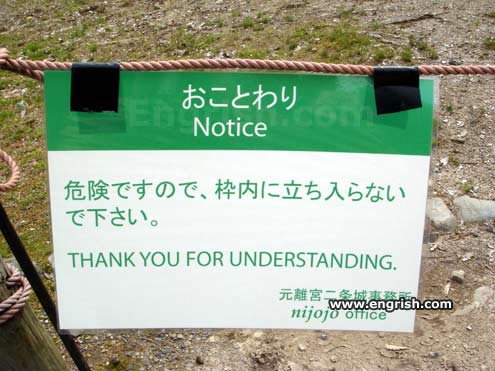
Notice…thank you for understanding
b. Overpoliteness and Wordiness
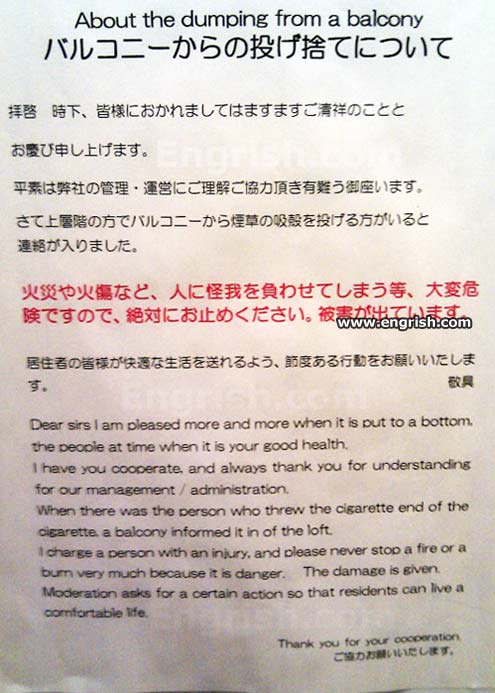
Here is a classic example of too much information. The only important part is “Do not throw things from the balcony.” Such overpoliteness and wordiness should be avoided in the preediting stage.
c. Long sentences
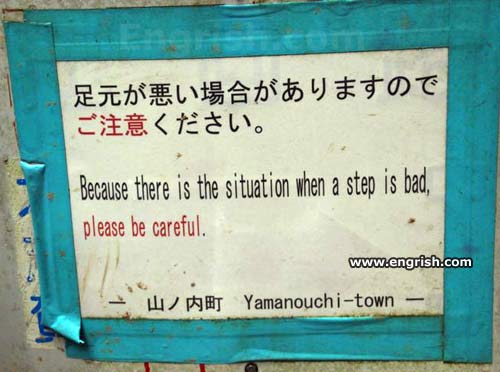
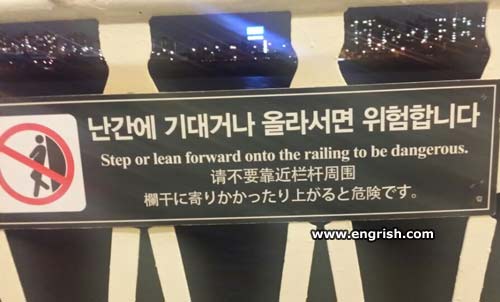
- 2. Syntax-based mistranslation
Syntax is one of the biggest problems with translation.
a. Addition of subject
When a subject (or object) is not supplied, the automatic translator will generally add one. Usually this is “it” or “I”. Both of these can be detected with back-translations, for example:
It as subject: It notes it gets wet and it slipsそれはそれが濡れて、それがスリップすることに注意します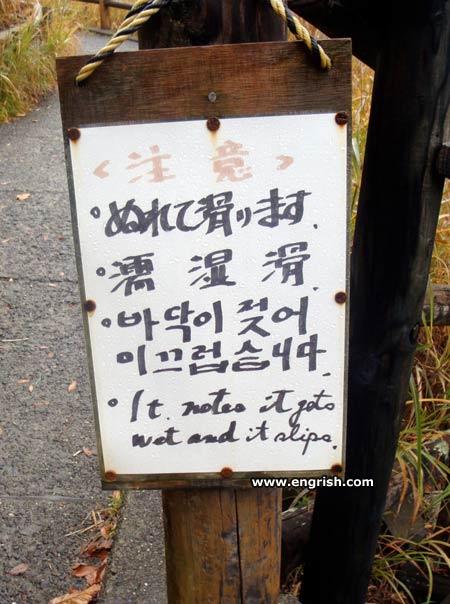
I as subject: I am prohibited from eating and drinking 私はここで食べたり飲んだりできません
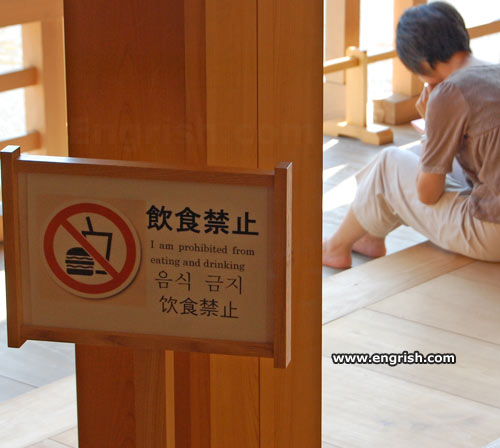
b. Addition of object
It as object : A man cannot put it in from here. “IT” 男はここからそれを入れない 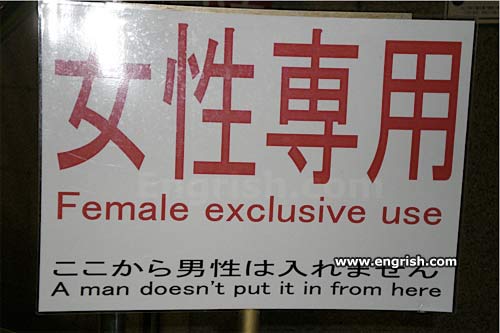
Me as object :
c. Reversal of word order
Find chinese example
- 3. Grammar-based mistranslation
a. Parts of speech
http://www.engrish.com/2011/01/coca-cola-is-a-proud-sponsor-of-the-eighteenth-amendment/
Passing through is prohibition通過は禁止です 逆翻訳は見つかりません In addition, the word “prohibition” should be “prohibited”. As is, it means 禁酒法
b. articles
エレベータートイレはこちら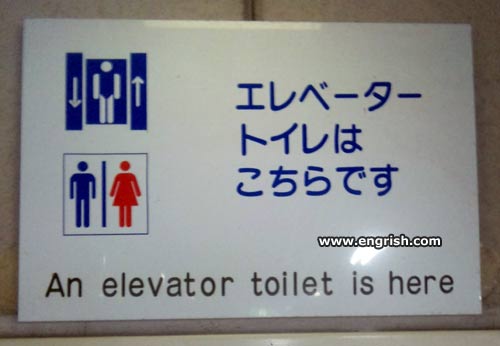
c. verb tenses and causation
Please do not let it play only in small children 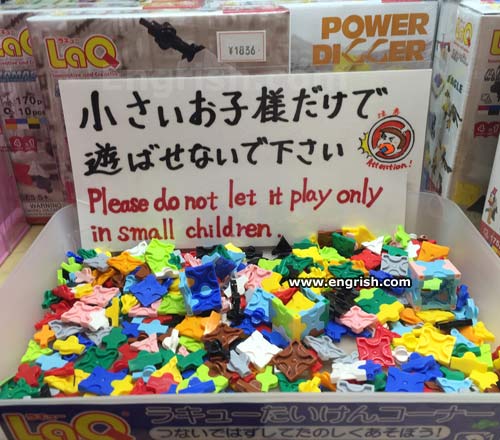
Don’t play dog 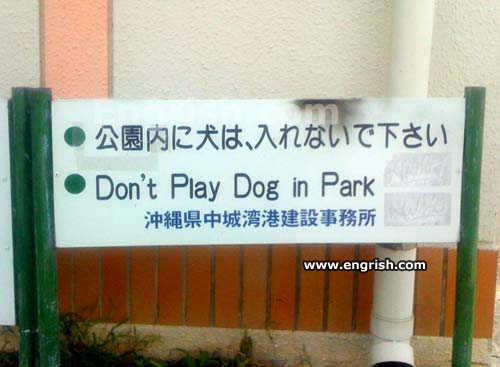 犬をしないでください
犬をしないでください
Please cause me trouble 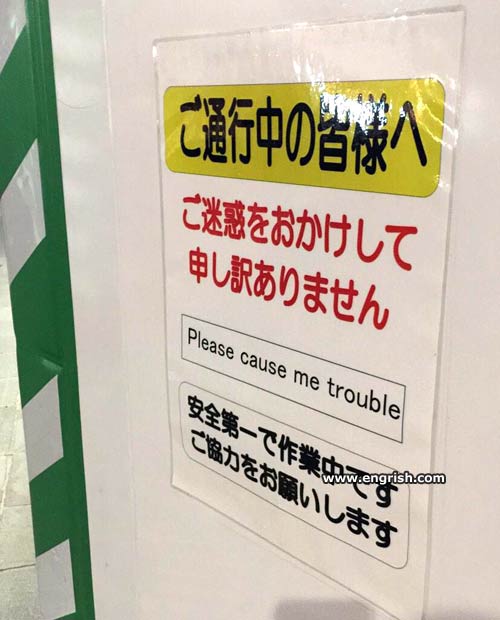 私を困らせてください
私を困らせてください
4. Word-meaning mistranslation
Many words may have two or more meanings, and be mistranslated in the other meaning. Here are two examples.
a. abunai
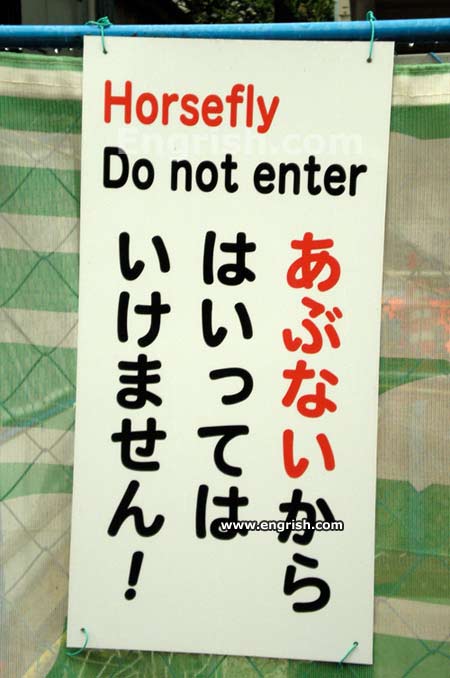
In this picture, the word "abunai" has two meanings, one translating as "dangerous" and the other as " no horsefly" Back translation, oddly enough, produces アヒルは入りません
b. agaranai

Do not get nervous is one way to translate 上がらないで but it means 心配しないで in Japanese. Here, back translation produces ベッドで靴のように緊張しないでください
5. Spelling
Spelling problems that result in different words will easily become evident with back-translation, as follows:
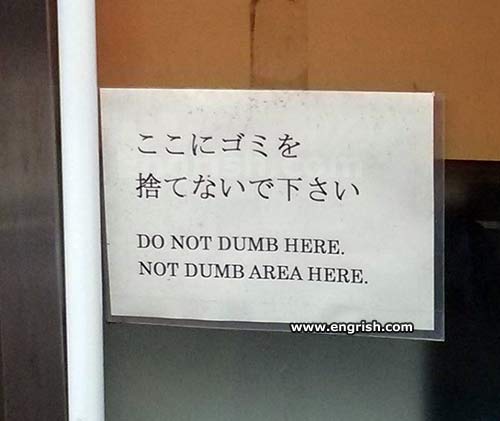
ここでは愚かではない。ここではダム区域ではない It is easy to understand that this was not the original meaning of the message.
On the other hand, minor spelling errors will often be automatically corrected and go unnoticed.
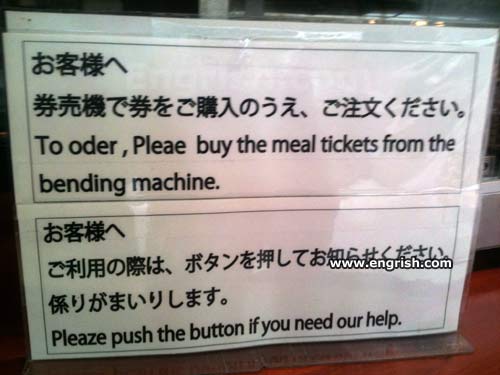
Back translation catches “bending machine”ご注文の際は、曲げ機から食事券を購入してください but automatically corrects minor spelling errors such as "pleae" and "oder"
逆翻訳 (日本を緑色にしましょう...消防長を焼かないでください)
a. Keep Japan green…don’t burn the fire chief http://www.engrish.com/2005/05/keep-japan-green/
b. 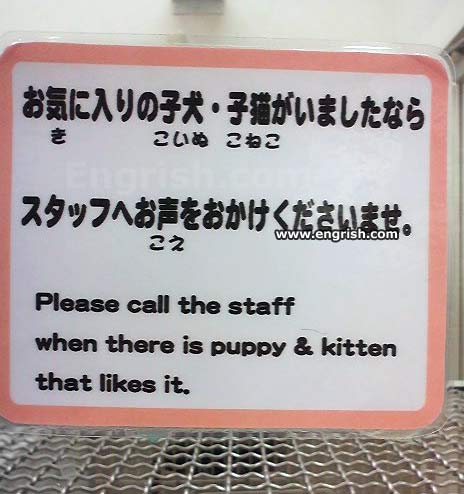
There is….
a. Please call the staff when there is puppy and kitten that likes it それが好きな子犬や子猫がいる場合は、スタッフに電話してください
THE LIMITS OF BACK-TRANSLATION
1. PASSING THROUGH IS PROHIBITION 通過は禁止です
2. Please do not let it play only in small children小さな子供にしか遊べないようにしてください
